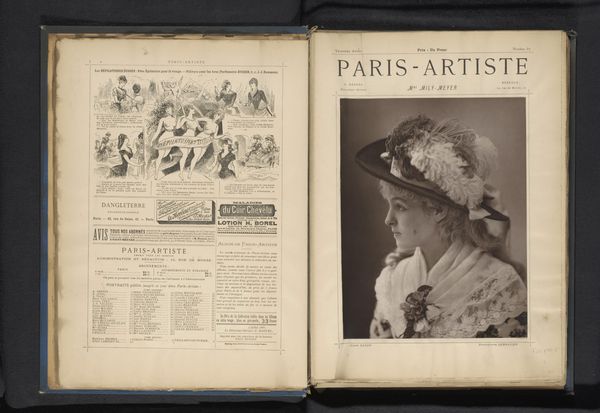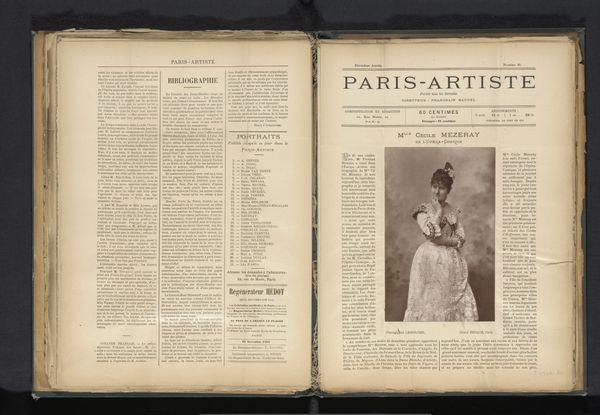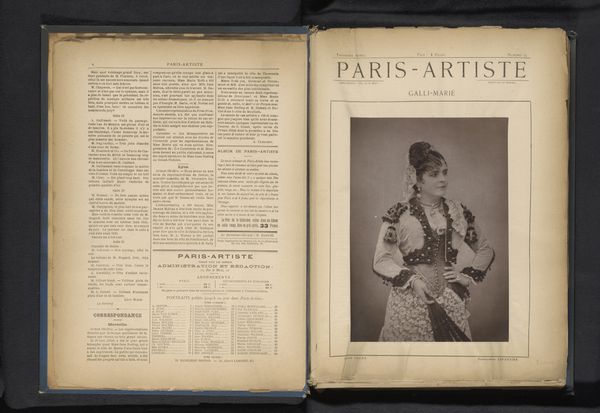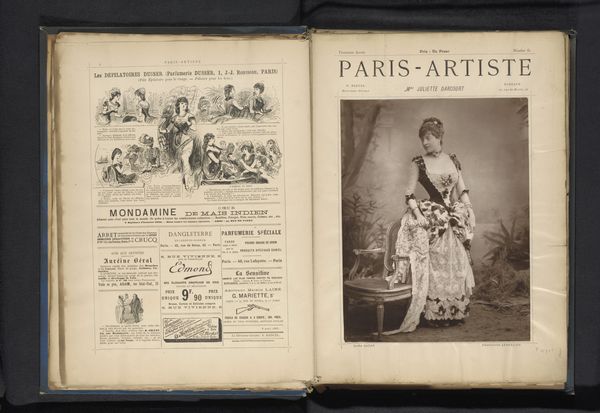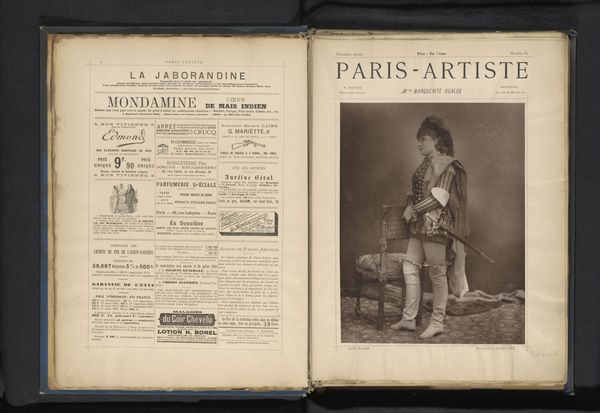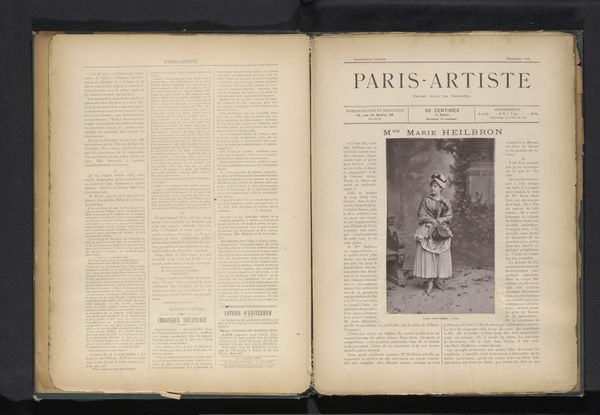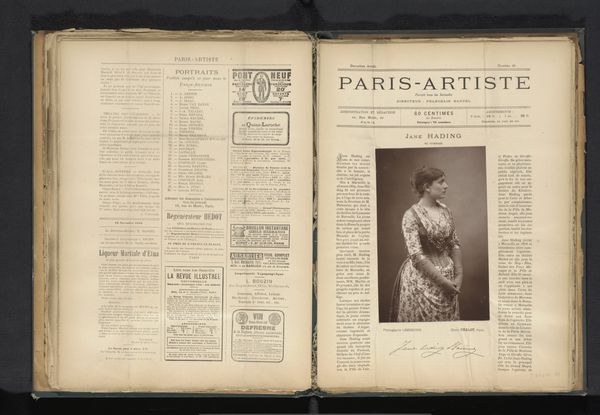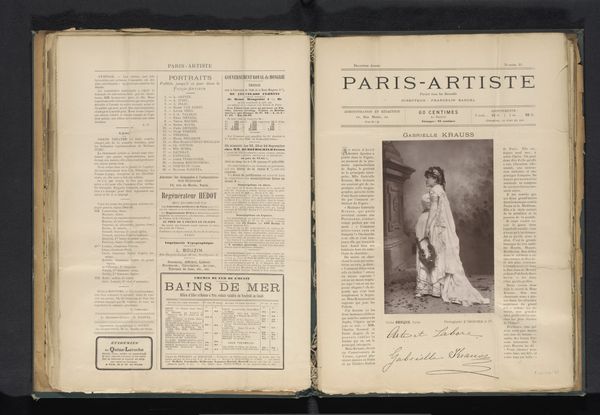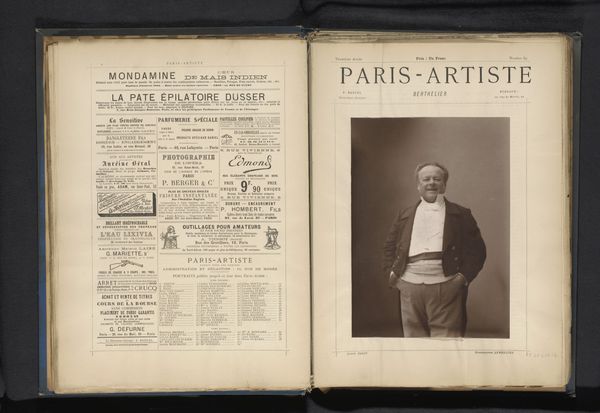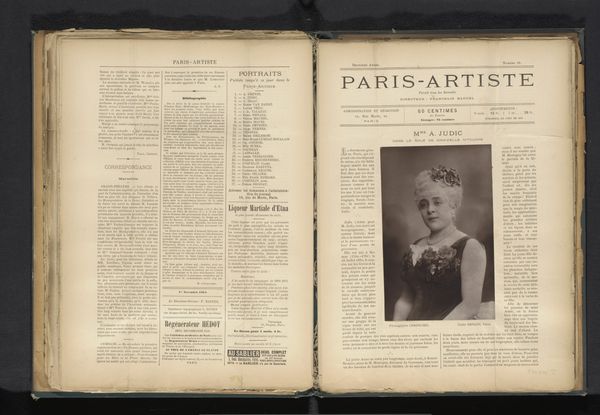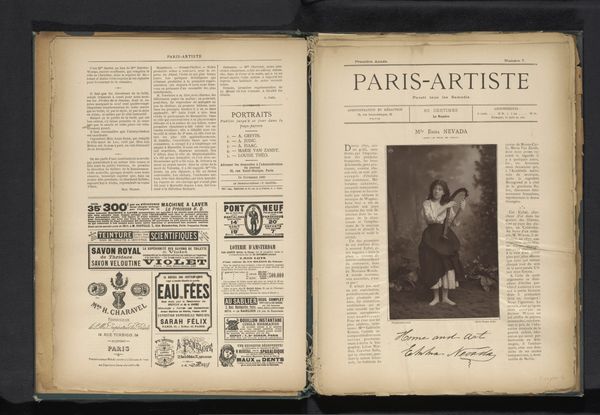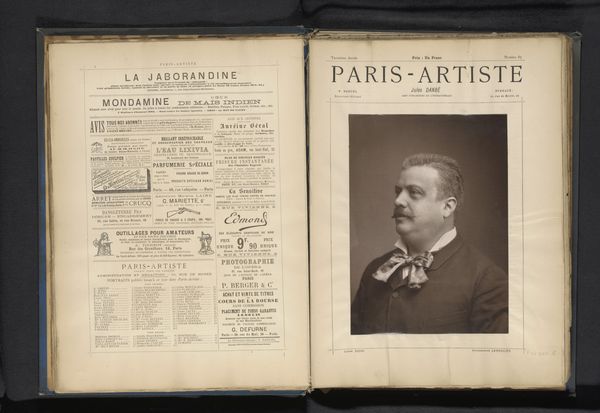
print, photography, gelatin-silver-print, albumen-print
#
portrait
# print
#
impressionism
#
photography
#
gelatin-silver-print
#
albumen-print
Dimensions: height 264 mm, width 202 mm
Copyright: Rijks Museum: Open Domain
Curator: Before us, we have a fascinating portrait of Juliette Beaumaine, captured by Nadar, around 1880 to 1885. It’s presented as a gelatin-silver print, seemingly within the pages of a magazine. The artwork now resides here, at the Rijksmuseum. Editor: She looks like she's stepped right out of a whimsical dream, doesn't she? A soft, ethereal quality permeates the image. Like looking at an old memory trying to refocus itself. Curator: Precisely! Nadar’s use of albumen and gelatin-silver printing is central to that dreamy quality. The albumen provides the tonality while the gelatin silver enhances the finer details, especially in the face and the delicate fabric of her attire. Editor: I find it interesting how the image becomes this tangible representation of societal glamour through careful choices of visual vocabulary and composition. Notice the direction of her gaze? Curator: Her gaze is angled off to the side. Which, in context, evokes a specific class dynamic of femininity. She embodies that ideal of delicate grace, perfectly accentuated by the ornate hat. We also must observe the printing process to understand how the chemical interaction heightens the ethereal atmosphere. Editor: The hat! That’s a universe of its own – all frills and fancies! Seriously though, I like the contrast with the subtle lines of her bodice and how that brings the photograph down from ostentation. The contrast of simple shapes gives a better understanding of visual order in photographic composition. Curator: It truly is a showcase of material and textural contrast. That is also what adds depth, almost forcing one's eyes to move rhythmically across the picture plane. Notice too the pose? It mirrors conventional upper class aesthetics of the period. Editor: Almost too perfect... the picture and context give me that feeling of calculated artificiality that was such a hit at the time. It’s that sense of artifice that fascinates me. Curator: Exactly. The material reality blends with performance, giving the piece more dynamism when discussing the history and semiotics of the period. Editor: Seeing how that material intertwines with performative character provides an enriching look into photographic history, and offers fresh ideas for viewing artwork. Curator: Indeed, it brings fresh attention to what photographic images used to mean in relation to identity and societal representation.
Comments
No comments
Be the first to comment and join the conversation on the ultimate creative platform.
